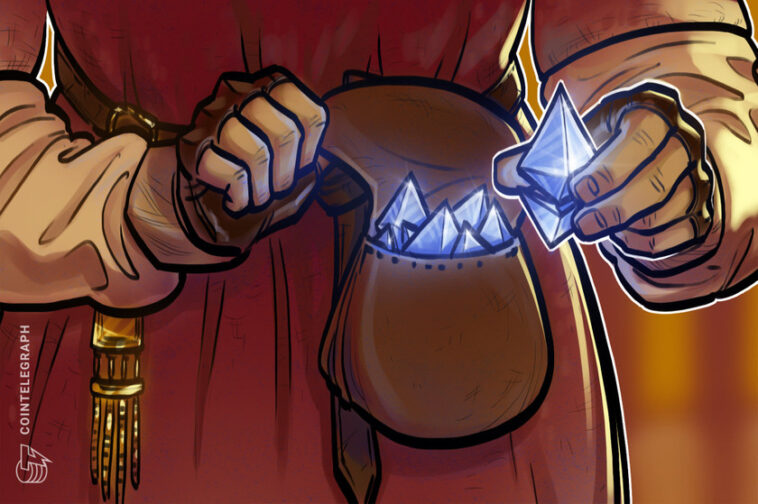What makes Ethereum a reliable mode of payment? Find what makes Ether qualify as money, its advantages and the process of accepting ETH payments.
Is there a possibility of a refund like traditional banks?
If an ETH transaction fails or someone mistakenly sends it a wrong address, is there a provision of a refund?
Ethereum does not refund gas costs for failed transactions. The fundamental design of an open blockchain like Ethereum renders such a provision improbable. Fees paid by the sender for adding transactions to blocks are paid directly to miners on Ethereum network, the status of the transaction as successful or failed notwithstanding.
In case of a failed transaction, the Ether the person attempted to send is returned to the wallet. However, if anyone ends up sending ETH to a wrong address, they would lose the fees as well as tokens, unless they know the receiver and they agree to return the amount.
If the funds have been sent to an address associated with an exchange, these could be recovered at the exchange’s discretion. One would need to share the transaction’s details with the exchange, such as the address one wanted to send ETH to and the hash of the wrong transaction.
Purchase a licence for this article. Powered by SharpShark.
What are gas costs in Ethereum?
Gas costs in Ethereum were exorbitant before the Merge with the Ethereum consensus layer. What has been the impact on gas costs?
The concept of gas was introduced in Ethereum to compensate for the computing energy the ecosystem requires to process and validate transactions. All computing requirements for processing a transaction are sourced from miners and the gas fees associated with specific transactions is distributed among the miners involved in block formation.
A gas limit indicates the maximum amount of gas one is willing to spend on a particular transaction. A higher gas limit means one needs to spend more to execute the transaction. The cost of gas goes up and down with the supply and demand for processing power.
The EVM (Ethereum Virtual Machine) can execute a diverse kind of smart contracts including swaps, options contracts, coupon-paying bonds, bets and wagers, employment, escrow and more. This enables businesses to collect funds in an automated manner without any human interference. Earlier, gas costs in Ethereum shot up when demand was high, often to exorbitant levels. After the introduction of the Ethereum consensus layer, the issue eased up.
Where to store ETH?
Merchants as well as users need a secure and convenient place to store ETH.
Depending on factors such as security and convenience, one could store ETH in hot or cold wallets. A “hot” cryptocurrency wallet is accessible online and facilitates transactions with the help of public and private keys. On the other hand, a “cold” wallet, also termed a hardware wallet, is a physical item that keeps cryptocurrencies offline. Cold wallets are considered more secure than hot wallets, while the latter are more convenient.
Most people holding ETH tend to store it in hot wallets, which are basically software programs capable of interacting with Ethereum blockchain. Hot wallets include desktop, mobile and most exchange custody wallets. Though these wallets make transferring crypto easy, they are vulnerable to hackers. For anyone holding ETH in large amounts, keeping the bulk of their crypto in a cold wallet while keeping just enough in a hot wallet to execute regular transactions might be an ideal solution.
Cold wallets, not connected to the internet, are at a lesser risk of being compromised compared to hot wallets. A USB drive device, used for storing ETH and other cryptocurrencies, stores a user’s private keys. Anyone holding ETH could also keep it in custody through a paper wallet, which they can generate on certain websites. A paper wallet has public as well as private keys regarding ETH on hold.
How to accept payment in Ethereum?
Any merchant looking to accept payment in Ethereum needs to take certain steps.
A merchant looking to receive payments in ETH needs to set up a payments infrastructure that facilitates transactions in an easy and convenient way. They can create a business account with a payment processor like BitPay, Flexa or CoinRemitter, and begin accepting ETH through their app. The process usually includes
-
Sign up for a business account.
-
Enter an Ethereum address.
-
Create an API key.
-
Add an integration method (API, plugins, invoices, payment widget or a payment link) to checkout.
-
Start accepting payment in Ethereum.
Web infrastructure platform Cloudflare supports the deployment of Ethereum for taking payments through its Ethereum and IPFS (InterPlanetary File System) gateways. One can log into the dashboard and configure a zone for Ethereum. Cloudflare’s Ethereum Gateway enables users to read and access all information validated by the existing nodes on the blockchain without restrictions.
What are the advantages of accepting payment in Ethereum?
Taking payment in Ethereum brings in a gamut of advantages for both users and entrepreneurs.
Transitioning to a blockchain-based ecosystem brings in a string of advantages for users as well as entrepreneurs. Here is a drop-down detailing why accepting payment in Ethereum works well for the customers of an enterprise:
Additional payment option
In a world that is fast adopting cryptocurrencies, providing customers with an additional payment option gives businesses an advantage over their competitors. Cryptocurrency gateways enable merchants to accept digital payments and receive the amount in fiat.
Transparency
A decentralized ecosystem is inherently transparent, giving customers more confidence while making the purchase. Crypto transactions get executed on a blockchain where they are written irrevocably, without any prejudice of a centralized authority.
Less fraud
Ethereum transactions in such purchases get routed through a smart contract, making fraudulent activities less likely. When smart contracts are audited, scamsters have negligible chances of succeeding.
Quick transactions
Global transactions in Ethereum are considerably quicker, compared to conventional international payments. Crypto transactions get executed in minutes, while fiat transactions routed through banks might take days to reflect in the account.
Enterprises too have a set of strong reasons to begin accepting ETH.
Finality
Finality refers to a transaction’s status when it is part of a block that cannot change. In Ethereum, conventionally working on proof-of-work (PoW) consensus algorithm, the average time for achieving finality is six minutes (25 confirmations) while the average time to mine a single block is 15 seconds.
This is considerably lower than Bitcoin (BTC), the largest cryptocurrency, which takes 60 minutes (six confirmations) to attain finality with the average time of 10 seconds to mine a block. When the Merge (the implementation of Ethereum’s consensus layer) is complete, the time it takes for an ETH transaction to reach finality will further decrease.
Data coordination
Ethereum has a decentralized architecture designed to allocate information and trust without prejudice, eliminating any need for a central entity to coordinate data. The decentralized system seamlessly manages the system and processes transactions.
Incentive layer
The ecosystem facilitates the development of mechanisms that reward supportive activities like verification and availability, while punishing activities that negatively affect the blockchain and surrounding mechanism. Incentives to promote honest behavior help to meet security requirements.
Tokenization
Any asset that has been registered in a digital format can be tokenized on Ethereum. Tokenization helps fractionalize previously cumbersome assets such as real estate, which had become simply too expensive and unravel new economic models such as crowdsourced data management.
Decentralized domain
Merchants with no prior exposure to crypto assets could find it overwhelming to send and receive cryptocurrencies. Crypto wallet addresses are a long string of digits and letters. Moreover, one requires a different address to collect each cryptocurrency payment.
Thanks to the Ethereum Name Service (ENS), users can create a universal nickname for all their public addresses. Rather than using an unreadable array of keys for receiving crypto payments, they could have a single ENS domain, like ‘Joseph.eth.’
What makes Ether qualify as money?
Ether satisfies all three major criteria for a currency: store of value, medium of exchange and unit of exchange.
Any currency fits the bill as a payment unit if it fulfills the above three features of money. Store of value is an asset that retains its purchasing power in future. The value could be stable or increase over time, but it won’t go down. Risk aversion is a key concept behind a store of value, and prices rise steadily if there is a perpetual demand for the asset.
As a medium of exchange, money serves as an instrument that facilitates the sale, purchase or trade of goods or services between parties. For settling economic transactions, currency is the most common medium of exchange. As a unit of account, money should be divisible, fungible and countable. Divisibility refers to the division of a unit of account into its component parts, which equal the original value. Fungibility is the property where a unit of currency has the same value as any other unit.
Ether scores well on all these parameters. ETH is a scarce digital money that is held and exchanged over a blockchain. Units of Ether can be used for measuring the value of goods and services, and later for purchase. An individual can use Ethereum for investment purposes as well. They could buy ETH and hold it to redeem in future, hoping for an increase in its value.
What is Ethereum?
Ethereum is the first-generation blockchain technology for building DApps, holding assets and transacting in a decentralized environment.
Powered by blockchain technology, Ethereum is a decentralized platform designed to be scalable, programmable and secure. It facilitates a peer-to-peer (P2P) network for the secure execution and verification of application codes via smart contracts. These are automated software blocks that enable participants to transact in the absence of a central authority.
Transaction records in Ethereum are immutable and transparent, while giving participants full ownership. To send transactions via user-created accounts, a sender has to spend Ether (ETH), the native cryptocurrency of the blockchain.
Thanks to its acceptability, Ether has emerged as a popular currency with which to make payments. Decentralized applications (DApps) use ETH to interact with apps based on Ethereum blockchain and execute transactions. The apps use bridges to work with cryptocurrencies other than ETH. This is termed cross-chain compatibility in blockchain parlance.




